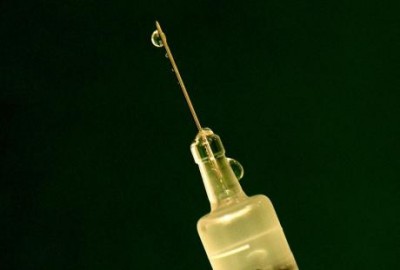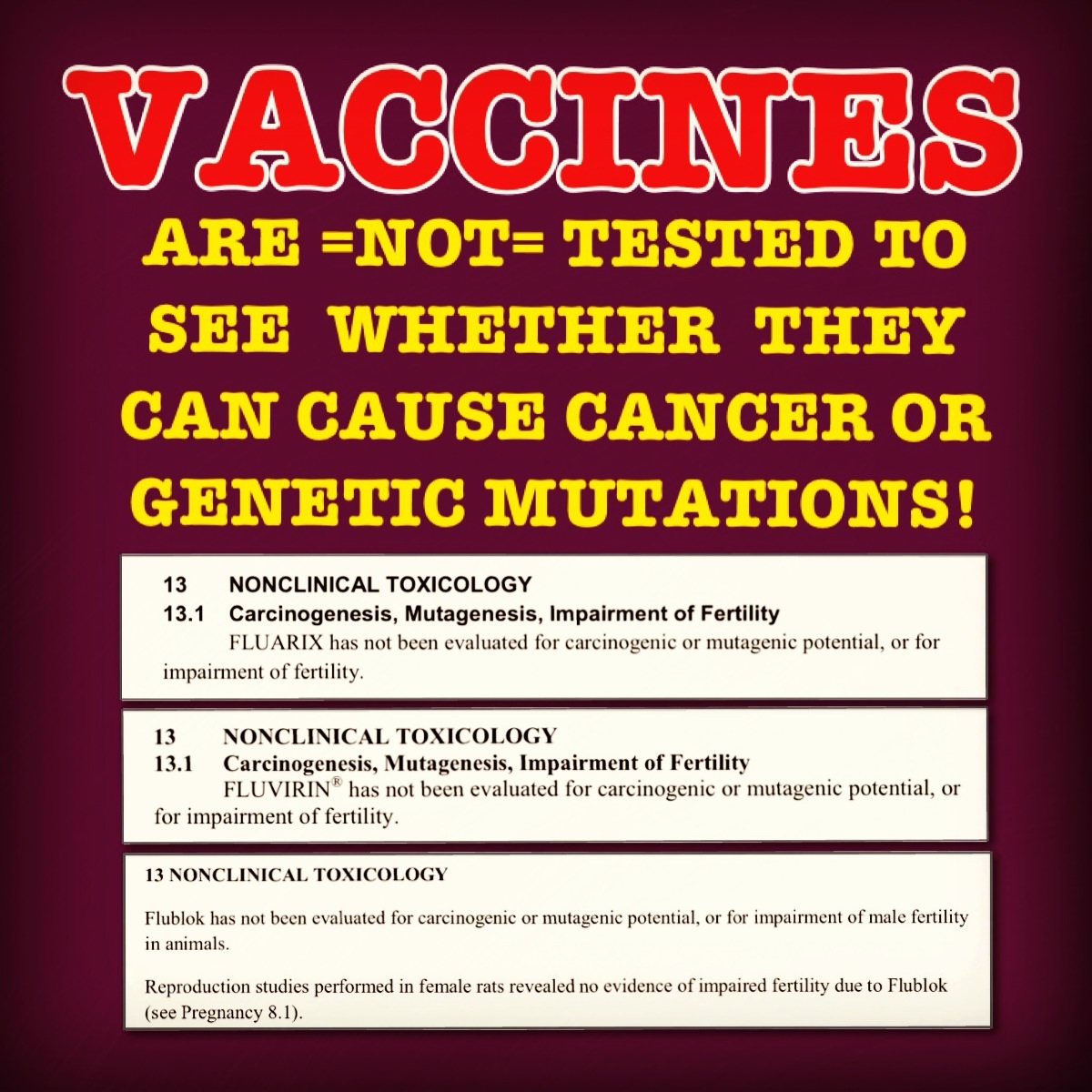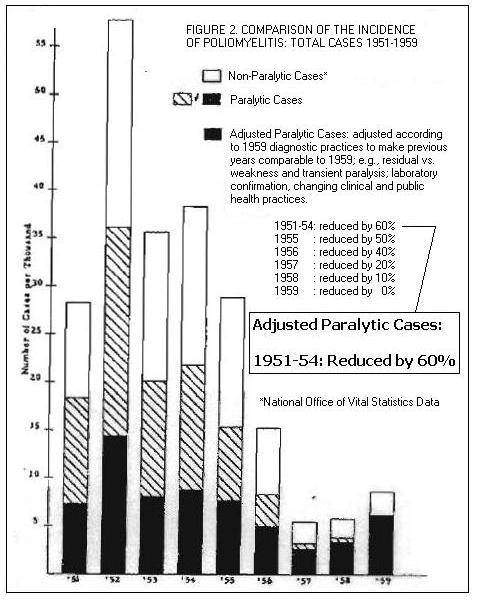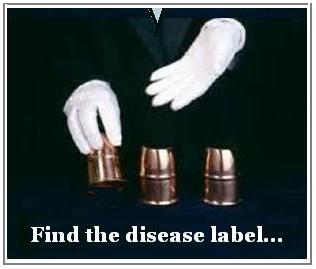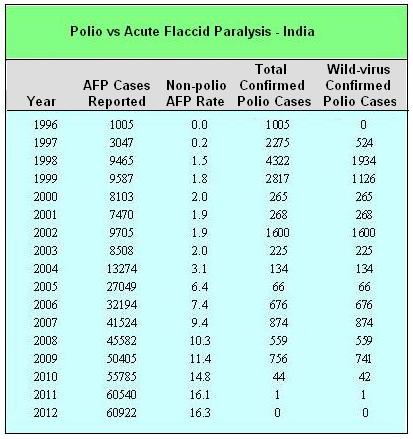Pornucopia
Does Too Much Porn Dull Sexual
Pleasure?
Critics
say that porn degrades women, dulls sexual pleasure, and ruins authentic
relationships – are they right?
But what if I’d grown up a decade or so later, when the internet had graduated beyond the old-school chatrooms and into the ubiquitous juggernaut of today? My memory might have been decidedly different.
‘The widespread use of internet porn is one of the fastest-moving global experiments ever unconsciously conducted,’ the US science writer Gary Wilson told a TEDx audience in 2012 [See video below]. For the first time ever, Wilson explained, we can track how ever-growing exposure to pornography affects sexual practices, appetites and trends. Wilson – who is neither a scientist nor a professor – is the founder of Your Brain On Porn, a site that popularises anti-pornography research. In his talk, he reiterated the site’s main conclusions: when we have pornography freely available at our fingertips, the brain’s reward circuits go into overdrive as they’re exposed to what he terms ‘extreme versions of natural events’. Instead of one or two possible sexual partners, now there are dozens, hundreds, all readily accessible in a single click. Like any addiction, Wilson says, the result is a numbed response to pleasure, from lack of interest in real women to erectile dysfunction. Ubiquitous pornography undermines natural sexuality.
Wilson’s talk has had approximately 4.6 million views – and its popularity heralds a new movement in pornography consumption: NoFap. ‘Fap’ comes from Japanese manga porn, where it is a sound effect for masturbation. NoFap is a move away from masturbation, and the pornography that so often forms its backdrop. The rationale derives from a version of Wilson’s argument: when you are constantly bombarded with heightened sexual stimuli, your virility is undermined. Your ability to communicate with real sexual beings collapses. You become isolated – porn, after all, is a solitary pursuit – and your emotional wellbeing plummets. Refrain from those stimuli, and from acting on them, and you will find yourself rejuvenated and your sexual powers reawakened, your emotional equilibrium restored and your happiness rising. When Wilson’s talk was first released, the self-styled ‘Fapstronauts’ numbered approximately 7,000. Today, there are more than 150,000.
The NoFap, brain-on-porn arguments are the latest in a common, critical refrain: that, for one reason or another, pornography is bad for you. The more traditional critiques say that pornography is inherently degrading to women – or whoever happens to be the object of sexual activity – and fosters unrealistic expectations of sex. It decreases the quality of real relationships and the self-image of those involved – and increases negative sexual attitudes and actions. Porn-users compare real humans to the fantastical images, and either come out unimpressed and reluctant to have real sex, or, at worst, demanding the types of behaviours they see on screen, regardless of their desirability to their partner. One poll from the US Pew Research Center in 2007 quantified the feeling, finding that 70 per cent of Americans said pornography is harmful.
Do any of these criticisms hold water? It would be nice to know. Reliable statistics about pornography are notoriously difficult to obtain – many people underreport their own habits, and many porn companies are loath to share any sort of viewership statistics. But according to ongoing research by Chyng Sun, a professor of media studies at New York University (NYU), the numbers are high and rising quickly. She estimates that 36 per cent of internet content is pornography. One in four internet searches are about porn.
There are 40 million (and growing) regular consumers of porn in the US; and around the world, at any given time, 1.7 million users are streaming porn. Of the almost 500 men Sun surveyed in one of her studies, only 1 per cent had never seen porn, and half had seen their first porn film before they’d turned 13. Cindy Gallop, the founder of the website Make Love Not Porn, told me recently that, in the past six months, the average age when children are first exposed to pornography dropped from eight to six. It wasn’t a deliberate seeking. Online pornography is now so widespread that it’s easier than ever to ‘stumble’ on it.
The actual effects of pornography on attitudes, behaviour, life and relationship satisfaction are difficult to study, and for many years most data have remained purely correlational or anecdotal. But early on, there emerged suggestive inklings that those who vocally opposed pornography’s spread might be motivated more by emotion than any tangible proof.
In 1969, Denmark became the first country to legalise pornography. In the years that followed, onlookers watched with interest and trepidation: what would happen to Danish society? As it turns out, nothing – or rather, nothing negative. When in 1991 Berl Kutchinsky, a criminologist at the University of Copenhagen who spent his career studying the public effects of pornography, analysed the data for more than 20 years following legalisation, he found that rates of sexual aggression had actually fallen. Pornography was proliferating, but the sexual climate seemed to be improving. The same thing happened, he found, in Sweden and West Germany, which followed Denmark’s legalisation campaign.
Kutchinsky concluded that the available country-level data ‘would seem to exclude, beyond any reasonable doubt, that this availability [of pornography] has had any detrimental effects in the form of increased sexual violence… the remarkable fact is that they decreased’ – a conclusion that has since been echoed by multiple studies of country-level data, from nations spanning North and South America, Europe and Asia. If anything, Kutchnisky wrote, pornography was being used precisely as it was originally intended: as an expression of a certain fantasy.
‘For someone with
lower sex drive, porn evokes the same magnitude response as eating chocolate’
When it comes to porn, going beyond correlational evidence can be difficult. ‘Science is so scared of pornography and sexuality, and it’s so discriminated against, that there’s a ton of work that hasn’t been done,’ Nicole Prause, head of the Sexual Psychophysiology and Affective Neuroscience Lab at the University of California, Los Angeles (UCLA), recently told me. ‘Most of the information we currently have is not experimental or longitudinal. Lots of data talk about correlates and associations, but the literature is especially bad – it can’t be trusted – because no one is doing experiments, no one is showing cause and effect. That needs to change.’
Prause fell into sex research by mistake: she followed a boyfriend to Indiana and found herself next to the Kinsey Institute, which happened to have an opening for a researcher. Soon, she was hooked. Today, Prause has become one of the few researchers in the US to study pornography in the laboratory. A trained neuroscientist, she focuses much of her efforts on the brain. Using fMRI, PET and EEG, Prause looks at how we respond to pornography – and how those responses translate to attitudes and behaviour. She has found that, in many ways, pornography is no different to a scary movie or a bungee jump. We just view it differently because it happens to involve sex. ‘There is a general idea that porn is special or unique in the brain. But frankly, it doesn’t look that different from other rewards,’ she says. ‘Lots of other things are as powerful. For someone with lower sex drive, for instance, watching porn evokes the same magnitude response as eating chocolate, in similar brain areas.’
What’s more, it doesn’t seem to be the case that people become desensitised to pornography, in the sense that the more you watch it, the more extreme your viewing content needs to become. When Prause and the psychologist James Pfaus of Concordia University in Quebec recently measured sexual arousal in 280 men, they found that watching more pornography actually increased arousal to less explicit material – and increased the desire for sex with a partner. In other words, it made them more, not less responsive to ‘normal’ cues, and more, not less, desirous of real physical relationships. In a 2014 review, Prause likened pornography addiction – the notion that, like a drug, the more you watch, the more, and higher doses, you crave – to the emperor who has no clothes: everyone says it’s there, but there is no actual evidence to support it.
Prause has also studied the question of relationship satisfaction more directly: did watching pornography negatively impact the quality of sexual intimacy? Working with the psychologist Cameron Staley of Idaho State University in 2013, she asked 44 monogamous couples to watch pornography alone and together, to see how it would affect feelings about their relationship. After each viewing session, the couples reported on their arousal, sexual satisfaction, perception of themselves, and their partner’s attractiveness and sexual behaviour. Prause and Staley found that viewing pornography increased couples’ desire to be with their significant other, whether they’d seen the film alone or together. Pornography also increased their evaluation of their own sexual behaviour.
In the past decade, experimental approaches such as Prause’s have finally started to grow in number – and for the most part, their conclusions cast doubt on the perceived social wisdom of pornography’s detrimental impact. As part of the 2002 Swiss Multicenter Adolescent Survey on Health, more than 7,500 16- to 20-year-olds were asked about their exposure to online pornography (over three-quarters of the males and 36 per cent of the females had viewed internet porn in the past month) and then measured on a variety of behaviours and attitudes. The researchers found no association between viewing explicit material and then going on to behave in more sexually risky ways. A 2012 review of studies that, since 2005, have looked at the effects of internet porn on adolescents’ social development and attitudes found that the prevailing wisdom that pornography leads to unrealistic sexual beliefs, more permissive attitudes and more experimentation is not founded on replicable research. ‘The aggregate literature has failed to indicate conclusive results,’ the authors conclude in the journal Sexual Addiction and Compulsivity.
Likewise with sexually violent behaviours or negative attitudes toward women. In one series of experiments conducted by the sexologist Milton Diamond of the University of Hawaii, viewing pornography neither made men more violent nor more prone to having worse attitudes toward women. In a 2013 study of 4,600 15- to 25-year-olds in the Netherlands, the psychologist Gert Martin Hald looked to see whether pornography-viewing had an effect on a wide variety of sexual behaviours, such as likelihood of adventurous sex (threesomes, same-sex partners for self-stated heterosexuals, sex with someone you met online, etc), partner experience (one-night stands, age of first encounter, number of partners, etc), and transactional sex (being paid money or something else for sex, paying someone else for sex). He found that frequency of pornography-consumption did indeed have an effect – but, once you controlled for other things, such as socio-demographic factors, risk-seeking, and social relationships, it explained only an additional 0.3 to 4 per cent of the impact. We shouldn’t dismiss the effect, Hald says, but rather understand it in context: it is one of many factors, each of which contributes to behaviour, and its influence is not any greater (and often, less) than that of other predisposing elements.
The negative behaviours we blame on
pornography might have emerged no matter what: porn is more symptom than cause

Indeed, in another study earlier this year, Hald and the psychologist Neil Malamuth of UCLA looked at the relationship between negative attitudes toward women and pornography use. They found that there was, in fact, a link – but only if a person was already low on a scale of so-called agreeableness. Those results came as no surprise: in 2012, they, along with the clinical psychologist Mary Koss of the University of Arizona, found that the only time pornography viewing was associated with attitudes that condoned any form of violence against women was in men already at high risk of sexual aggression. When they summarised the data that preceded their work, they wrote that negative effects ‘are evidence only for a subgroup of males users, namely those already predisposed to sexual aggression’. The negative behaviours we blame on pornography, in other words, might have emerged no matter what; porn is perhaps more symptom than cause.
It’s a message that new research is increasingly supporting. Earlier this year, a group from VU University Amsterdam in the Netherlands attempted to disambiguate cause and effect in relationship satisfaction: did frequent pornography viewing cause people to drift apart – or was it the result of their having drifted apart already? For three years, the psychologist Linda Muusses and her colleagues tracked just under 200 newlywed couples, as part of a broader study on marriage and wellbeing. At regular intervals, both members of every couple were asked about their use of ‘explicit internet material’, as well as their happiness with the relationship and their sexual satisfaction. The happier men were in relationships, they found, the less pornography they watched. Conversely, more viewing predicted lower happiness a year later. It was a self-reinforcing cycle: get caught in a good one, with a satisfied relationship, and porn was a non-issue. But lose satisfaction, watch more porn, and realise your relationship is further disintegrating.
Muusses and her colleagues also noticed that higher levels of pornography use at the start of a relationship did not predict a less sexually satisfying experience later on, for men or women. ‘Our findings suggest that it is implausible that SEIM [sexually explicit internet material] causes husbands to contrast their sexual experiences and partner’s attractiveness with their SEIM experiences with long-lasting effects,’ the authors wrote.
Why, then, does the disconnect persist between theory, opinion and social sentiment, on the one hand, and empirical research, on the other? Part of the problem stems from the difficulty of saying exactly what pornography actually is. The deeper I ventured into the world of pornography, online or not, speaking with producers, viewers, distributors, the stars themselves, the more I realised how misplaced the very premise of that framing was: there isn’t a monolithic ‘pornography’, just like there isn’t a monolithic ‘Hollywood film’. When we go to the cinema, there are dramas and comedies, horror and sci-fi, thrillers and romantic romps – movies to suit any mood, any taste, any occasion. The experience and effects of each differ. We don’t emerge from Selma in the same frame of mind as we do from When Harry Met Sally. But while we understand that implicitly when it comes to mainstream cinema, we don’t see pornography with the same level of nuance. ‘We cherry-pick the worst, most aggressive examples,’ said the media researcher Chyng Sun.
I heard the same refrain over and over, from every researcher and every member of the pornography industry I spoke with: pornography is to sex as Hollywood films are to real life. Pornography is fantasy, pure and simple. And just as any fantasy can be channelled in any direction, so too can pornography. There are bad fantasies – Sun’s ‘worst, most aggressive examples’, just as there are good fantasies, instances of pornography that should pass any feminist’s muster, both in terms of quality and the ethical standards of filming. As Coyote Amrich of Good Vibrations, an adult retailer in San Francisco (one of the oldest such retailers in the country) puts it: ‘Just like not everyone is a Bernie Madoff in finance, not every person involved in porn is this terrible person. Some are really great and have allowed incredible content and have been supportive of male and female performers, and help people make great careers.’
That short description goes to the heart of what makes pornography the kind of fantasy we can feel good about versus the kind we should actively question. It’s not a question of content but rather one of ethics, where the number-one criterion is the treatment of the actors. ‘Are the women enjoying themselves and having authentic pleasure as far as we can tell? Are the other people in the scene with them not saying debasing things to them or, if they are, is it clear that it’s wanted – yes, I want you to call me a slut, so call me a slut?’ Amrich explained. It matters little what acts are being performed or how; we shouldn’t be quick to dismiss something as bad just because we, personally, don’t think anyone could possibly enjoy it. What matters is that the people performing these acts enjoy their performance. As Jamie Martin, who previously worked with Amrich at Good Vibes, put it: ‘If it’s not hurting anyone, and someone is going to get off on it, why not?’
Amrich refuses to stock any films where the ethical treatment of actors isn’t completely clear, a stance I saw from multiple buyers, distributors and retailers. Increasingly, people insist that the product they host on their site or bring to their customers comes from a place of clear desire. Not all porn is created equal. ‘We need to move past the notion that a female performer is a victim. It’s antiquated,’ Amrich says. ‘It doesn’t acknowledge female power, pleasure, women taking control of sexuality. It only serves the idea that a woman who is sexual is being taken advantage of.’
Jiz Lee, recognised as one of the leading modern genderqueer adult performers, has been in the industry for more than 10 years, and says ethical pornography is a priority. The single biggest marker of such porn is that it costs the consumer something. ‘By paying for it, it’s a guarantee,’ Lee told me, taking a break from shooting with the director Shine Louise Houston. ‘Otherwise, it can be hard to tell if it was ethically shot. Paying helps insure it, and helps the company be in good standing.’ These days, they point out, the internet doesn’t just function as a way to distribute pornography; it’s a way of gauging quality and blacklisting those sites that don’t meet certain standards. ‘I won’t work for a company that has a poor record or is exploitative,’ Lee says. ‘And I will tell everybody else.’
In the absence of other options, pornography
becomes a de facto way
of educating yourself about sexuality
Ethical pornography is becoming increasingly less exceptional. The porn industry of today is a far cry from the ‘San Pornando Valley’ adult entertainment industry of the 1990s. There are more women in charge, more readily enforced standards, and more accountability.
But regardless of what pornography insiders say, for consumers, especially younger ones who are growing up with a ubiquitous internet, the view is quite different. Unlike Hollywood, where it’s clear to anyone that they are watching an idealised version of reality, with pornography, that realisation is often absent. For one simple reason: we don’t talk about sexual pleasure as children, adolescents or adults. It’s a taboo, guilt-ridden area. In the absence of other options, pornography becomes a de facto way of educating yourself about sexuality. As one 2014 study of low-income black and Hispanic youth put it, led by Emily Rothman of the Boston University School of Public Health, quoting an interview with a porn-watching adolescent: ‘Without porn, I wouldn’t know half the things I know now.’
The sex researcher Alice Dreger of Northwestern University in Chicago recently live-tweeted from a high-school sex-education class – her son’s. His teacher’s approach, it soon became clear, was absolute avoidance of any topics other than abstinence. Any attempt to broaden the conversation was stonewalled. And therein lies the problem. We see pornography as a socially destructive force, but there’s nothing inherently destructive about it. It becomes so only when it is the one thing adolescents see as they discover sex: they use it as a learning script. It’s not a problem of pornography as such, but rather, a problem of the absence of a competing script, something that contextualises porn as a fantastical, not real-life, experience.
The way to change that – and to change the negative effects such a misperception can have – isn’t to restrict or ban pornography. It’s to bring the discussion of sexual pleasure to the foreground, especially in sex-ed. ‘We need to supplement pornography with non-porn sexual education, so that porn becomes fantasy sex rather than a real-world template,’ Zhana Vrangalova, a psychologist at NYU who specialises in sexuality, told me. ‘We need to give people permission to enjoy sex. Until we do that, they will go to porn. Because you can’t kill curiosity.’
Already, certain movements are trying to do just that. Jessica Cooper helps run ScrewSmart, a sex-education collaborative in Philadelphia that aims to foster open dialogue about sexual pleasure. The group meets with students, hosts workshops, discusses porn and its role openly and honestly. ‘One of the biggest issues for sexuality in general is permission,’ Cooper told me. ‘People want permission to like things they like, want what they want. We are giving them permission to say yes. Your desires are valid, sexuality is important, what you want to do is not wrong. Porn does that, especially to women. They need to be told, I’m not an evil, weird creature for enjoying this.’
Other programmes are starting with even younger children – an important step given the ever-earlier pornography exposure that might otherwise seep through unexplained. In Norway, Line Jansrud, the presenter of Newton, an educational show on state TV, gives herself a hickey with a vacuum cleaner, kisses a tomato and uses a lubricated dildo on an anatomically correct doll model. She wants to explain how real sex works, so that children and adolescents can distinguish Hollywood from real life. Her target audience: third-graders.
The effects of this social change reach far beyond sexual education as such. ‘We’re missing important therapeutic effects of using erotica because of taboos,’ Prause says. ‘Aroused states and orgasms do really nice things for the brain and body.’ Erotica can, for some women, be the mythical Viagra that has thus far gone missing, a way of empowering them and ‘putting their brain in that mode, helping it do what it’s been programmed to do’. There is certainly a desire for it, albeit largely unspoken in normal circumstances: when Prause’s group placed an ad for one of their recent studies, the response broke their phone lines. They had to take it offline. There is also evidence that the social effects of watching porn can spread beyond the individual: pornography has been shown to improve acceptance of homosexuality, birth control and extra-marital sex.
And porn has the potential to go even further. Sun doesn’t like pornography – but it’s not actual porn she doesn’t like. It’s the social norms and standards that led to the creation of certain stereotypes in the first place: not a result of pornography, but rather a reflection of the direction broader society has taken. ‘We live in a patriarchy, where women are fundamentally objectified. We shouldn’t be surprised to see it play out in pornography.’
We shouldn’t be worrying about whether pornography has negative repercussions on society. We should be worrying about the kind of society that would lead to the types of pornography we find distasteful in the first place – and work on fixing that society rather than blaming its inevitable result.
The great porn experiment | Gary Wilson | TEDxGlasgow
For more information about sex see http://nexusilluminati.blogspot.com/search/label/sex
- Scroll down
through ‘Older Posts’ at the end of each section
Hope you like this
not for profit site -
It takes hours of work every day by
a genuinely incapacitated invalid to maintain, write, edit, research,
illustrate and publish this website from a tiny cabin in a remote forest
Like what we do? Please give anything
you can -
Contribute any amount and receive at
least one New Illuminati eBook!
(You can use a card
securely if you don’t use Paypal)
Please click below -
Spare Bitcoin
change?
Images by R. Ayana – https://farm9.staticflickr.com/8660/16076620072_579074580d_k.jpg
https://farm9.staticflickr.com/8576/15971639102_5b986f9deb_k.jpg
https://farm9.staticflickr.com/8576/15971639102_5b986f9deb_k.jpg
Video - https://youtu.be/wSF82AwSDiU
For further enlightening
information enter a word or phrase into the random synchronistic search box @
the top left of http://nexusilluminati.blogspot.com
And see
New Illuminati – http://nexusilluminati.blogspot.com
New Illuminati on Facebook - https://www.facebook.com/the.new.illuminati
New Illuminati Youtube Channel - http://www.youtube.com/user/newilluminati
New Illuminati on Google+ @ For
New Illuminati posts - https://plus.google.com/u/0/+RamAyana0/posts
New Illuminati on Twitter @ www.twitter.com/new_illuminati
New Illuminations –Art(icles) by
R. Ayana @ http://newilluminations.blogspot.com
The Her(m)etic Hermit - http://hermetic.blog.com
DISGRUNTLED SITE ADMINS PLEASE NOTE –
We provide a live link to your original material on your site (and
links via social networking services) - which raises your ranking on search
engines and helps spread your info further!
This site is published under Creative Commons (Attribution) CopyRIGHT
(unless an individual article or other item is declared otherwise by the copyright
holder). Reproduction for non-profit use is permitted
& encouraged - if you give attribution to the work & author and include
all links in the original (along with this or a similar notice).
Feel free to make non-commercial hard (printed) or software copies or
mirror sites - you never know how long something will stay glued to the web –
but remember attribution!
If you like what you see, please send a donation (no amount is too
small or too large) or leave a comment – and thanks for reading this far…
Live long and prosper! Together we can create the best of all possible
worlds…
From the New Illuminati – http://nexusilluminati.blogspot.com



